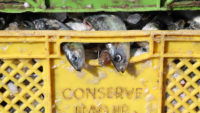FDA Issues Final Guidance for Seafood Processors On How to Avoid Ciguatera Fish Poisoning

The U.S. Food and Drug Administration (FDA) issued final guidance recommending that primary seafood processors who purchase reef fish such as grouper, amberjack, snapper, lionfish, king mackerel, and barracuda take steps to minimize consumers’ risk of ciguatera fish poisoning (CFP) from the fish they distribute. An FDA statement said the guidance complements the agency’s existing advice on preventing CFP, which is contained in the Fourth Edition of the Fish and Fishery Products Hazards and Controls Guidance (2011) (Guide), and identifies two species of lionfish (Pterois volitans and Pterois miles) as additional reef fish associated with the risk of CFP.
CFP is caused by consuming fish that have eaten toxic marine algae or that have eaten other fish containing the toxins. The toxins accumulate in the flesh of reef dwelling fish, with higher ciguatoxin levels predominately found in predatory species, which are then harvested either commercially or by recreational fishermen. Consumers who eat fish that contain ciguatoxin are at risk for contracting CFP.
Primary seafood processors can minimize the risk of CFP by not purchasing fish that are likely to carry ciguatoxins. The Guide recommends that primary seafood processors who purchase fish directly from fishermen obtain information about harvest locations to determine the potential for ciguatoxic fish based on knowledge of the regions where ciguatera occurs. The guidance states that primary seafood processors should avoid purchasing fish species associated with causing CFP from established or emerging areas linked with CFP.
Future updates of the Guide will include the two species of lionfish as reef fish for which measures to prevent CFP should be in place.
FDA published a draft of this guidance in March 2013, soliciting comments. FDA received very few comments, none of which prompted FDA to revise the draft guidance before making it final.
For additional information, see:
Fish and Fishery Products Hazards and Controls Guidance, Fourth Edition (2011)
Looking for a reprint of this article?
From high-res PDFs to custom plaques, order your copy today!






